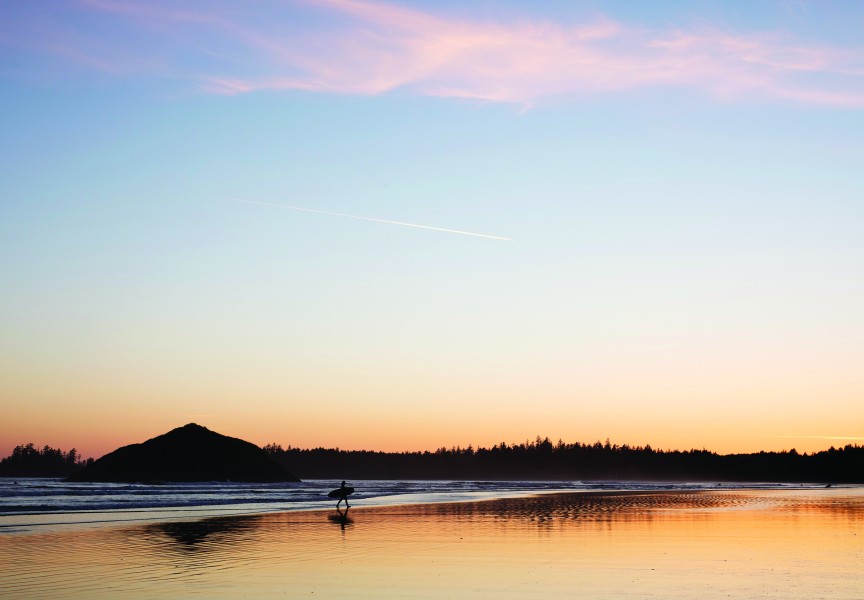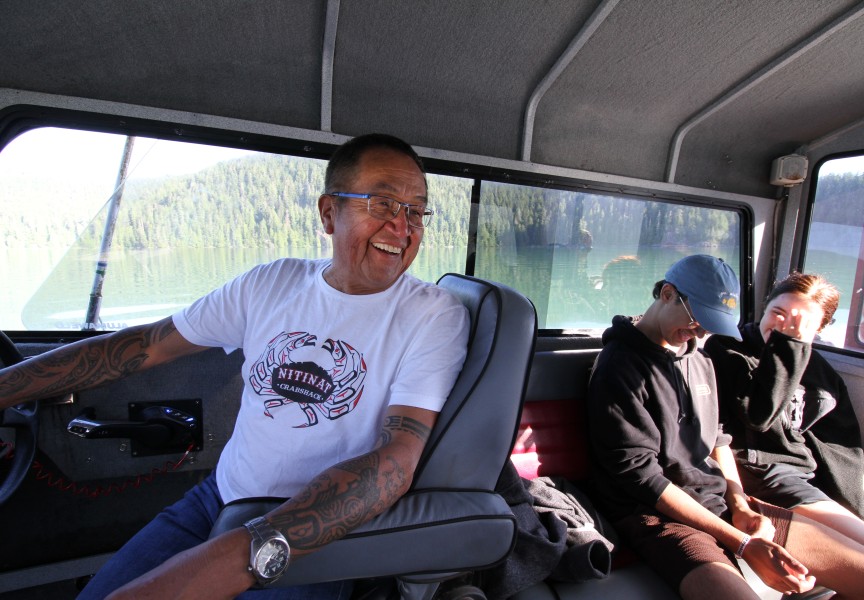A Conference Board of Canada report released this past week shows just how much the Indigenous tourism industry has suffered throughout the country since the pandemic began.
And Keith Henry, the president and CEO of the Indigenous Tourism Association of Canada (ITAC), believes some Nuu-chah-nulth tourism businesses could potentially be among those who will experience the most difficult paths back to recovery.
“I think Indigenous tourism where there are more remote locations like on the west coast of British Columbia, we have to work very hard to advocate for additional supports,” Henry said. “Without those additional supports the data shows that tourism visitors that make up the bulk of their business won’t be back until at least 2028 or longer if we don’t take drastic actions following the (federal) election.”
The Conference Board of Canada report, which was released Sept. 15, was the third economic assessment commissioned by ITAC since 2018.
The latest report found that back in 2019, a year before the COVID-19 pandemic arrived in Canada, the Indigenous tourism industry employed close to 39,000 people across the country and brought in an estimated $1.86 billion in direct GDP.
The report also found the pandemic had significant impacts on the industry in 2020. The number of workers had dropped to about 10,600 and there was a $580 million contribution in direct GDP.
The situation has improved somewhat in 2021 as the industry is employing close to 20,000 people and will provide an estimated $858 million in direct GDP.
A troubling statistic, however, for the industry is the fact the report found at least one third of Indigenous tourism businesses across the country are at serious risk of closure either this year or in 2022.
Henry said data compiled by Destinations Canada, a Crown corporation that is responsible for the national marketing strategy worldwide, as well as internal ITAC research, indicates that the road to recovery for the industry will be a lengthy one.
He said Destinations Canada officials and some partners have acquired information to try to figure out just how long it might take the industry to recover and get back to 2019 levels.
“They expect to be back by 2024 or 2025,” Henry said. “But (Indigenous tourism businesses have) been hit hardest of the hard hit in tourism. We’re going to be at least until 2028 to get back to 2019 levels. So, we’re being disproportionately impacted and our businesses are disproportionately feeling the loss of business.”
Henry added it might be even longer than 2028 before some Indigenous tourism businesses are back at levels prior to the pandemic.
“That’s best-case scenario,” he said of the 2028 forecast. “But we’re probably looking at 2030.”
The length of the recovery will also be affected by additional waves of the pandemic, which could result in future lockdowns and restrictions, affecting how much funding will be provided to keep some tourism businesses afloat.
Henry said federal funding, and lots of it, is required as soon as possible for the industry.
“We’re already laying the foundation to try and forge a new investment strategy to help Indigenous businesses by hopefully Apr. 2, 2022 minimally,” he said. “This current year is pretty much locked in so we’re planning. We’re engaged with the federal government in a series of conversations right now and we’ve invited many industry partners to the table to say how [we’re] going to save Indigenous tourism.”
Henry, who lives in Vancouver, is fully aware how much the tourism industry means to several Nuu-chah-nulth First Nations.
“We know that many of the Nuu-chah-nulth Nations have actually acquired some combinations of lodge experiences,” he said. “We know that certain operators in the Nuu-chah-nulth regions have expanded their businesses. And we think that’s an important set of investments and now our job at ITAC is to figure out how we’re going to contribute marketing and drive visitors in the new world, as I call it for, for 2022 and beyond.”
While many of these Nuu-chah-nulth tourism businesses are relatively new, Henry believes it’s vital not to lose them.
“Those businesses are very critical to the stability of our industry,” he said. “And we think that those investments need to be protected now more than ever. But it’s going to take all of us working together.”
Various lockdowns and travel restrictions have certainly not helped Nuu-chah-nulth businesses in the past two years.
“All of us are desperately trying to find ways to open safely and move visitors through,” Henry added. “The nations and the communities in many cases in the Nuu-chah-nulth regions seem to understand the importance of welcoming visitors, so that’s great. On the other hand, we all have to follow public health policies.”
Henry also said there’s another reason why some Nuu-chah-nulth tourism businesses are perhaps more vulnerable than others in the industry.
“There’s just not the same transportation opportunities to get there any more so it’s going to take a concerted effort from all of us to help those businesses,” he said.
The Conference Board of Canada is a not-for-profit Canadian think tank. It is dedicated to researching and analyzing economic trends as well as performance for organizations and public policy issues.
The latest report it worked on for ITAC included information gathered from about 350 Indigenous-owned tourism operators across the country. They had responded to a survey between April and June of this year.
Those business owners were asked for their thoughts on how their companies were faring since the start of the pandemic as well as what they were expecting for the rest of this year and in 2022.







